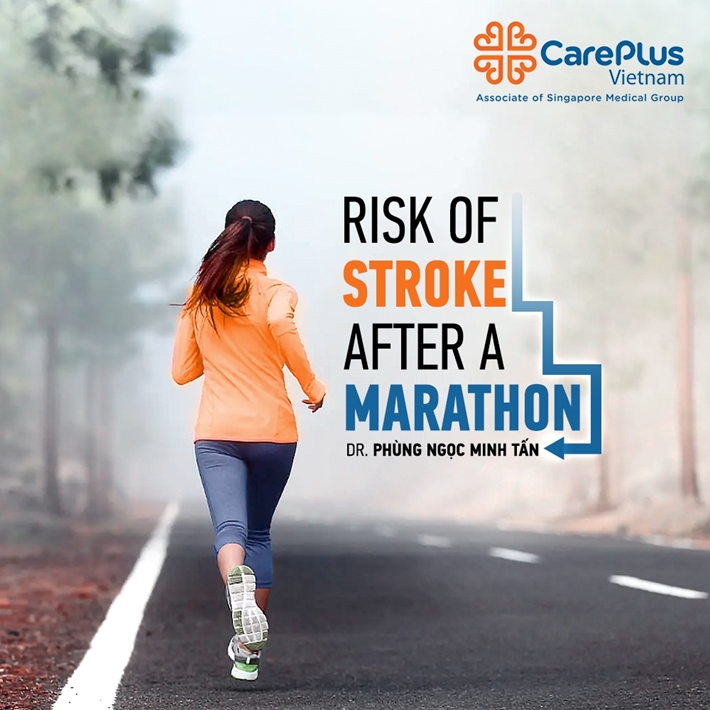RISK OF STROKE WHEN JOINING A LONG RUN (MARATHON)

6/23/2022 9:24:37 AM
Marathon is the cornerstone sport of the Olympic movement. Inspired by the event that soldier Pheidippides died while running back to Athens to announce the victory, Marathon is a content that appears in every modern Olympic Games. Besides professional athletes, the number of participants in the marathon movement is increasing. Along with that is the risk of sudden death when participating, like the recent event in Quy Nhon. The following article will provide 10 information about sudden death during marathon competition, extracted from the RACER registry in the United States.
1️⃣. Cardiac arrest during a marathon (42km) or half-marathon (21km) is counted from the start until 1 hour after stopping the race.
2️⃣. The rate of cardiac arrest during marathon participation is estimated at 1 in every 100,000 participants. This rate in half-marathons is 400,000 people with 1 case.
3️⃣. The mean age of cardiac arrests is 42 +/- 13 (age). Men make up the majority (86%)
4️⃣. Among patients with cardiac arrest, 71% died later.
5️⃣. Regarding the cause of cardiac arrest, it is noteworthy that in patients who died after cardiac arrest, hypertrophic cardiomyopathy was the most implicated cause. Meanwhile, coronary artery disease (ischemic heart disease) is the predominant cause in cardiac arrest survivors.
6️⃣. Causes such as electrolyte disturbances (hyponatremia), heat stroke, etc., although often noticed by runners, are not the most common (accounting for 7% and 3% of all deaths, respectively. death)
7️⃣. Factors affecting survival after cardiac arrest. Immediate CPR and the presence of a cause of cardiac arrest other than hypertrophic cardiomyopathy are the two most important prognostic factors for survival. In addition, defibrillation-probable arrhythmias (ventricular tachycardia, ventricular fibrillation) and history of long-distance running (first-time entrants are at higher risk) were also independent factors—in recovery outcomes after cardiac arrest.
8️⃣. Running distance is closely related to cardiac arrest cases. Marathons have a higher rate of cardiac arrest than half-marathons. The number of cases of cardiac arrest increases with the distance running. The vast majority of sudden deaths occur about three-quarters of the way to the finish line
9️⃣. In this registry, it is essential to note that younger deaths occurred. This may be because, in young people, the leading cause is hypertrophic cardiomyopathy, while in the elderly, it is mainly coronary artery disease. Cardiac arrest resuscitation in cases of hypertrophic cardiomyopathy has a much lower chance of success than in patients with coronary artery disease.
🔟. Another difference in this statistic is that cardiac arrests due to ischemic heart disease are saved most of the time when coronary angiography does not show coronary plaque. This suggests that in these cases, the cardiac arrest may be due to the loss of myocardial oxygen supply and demand due to overexertion rather than the rupture of the atherosclerotic plaque.
🏅RACER study data collected from more than 10 million U.S. long-distance runners suggest that screening for important causes such as coronary heart disease and hypertrophic cardiomyopathy may be helpful before participating in the marathon.
Rehydration - electrolytes, avoiding heat shock are often concerned by runners and invested in equipment, but the screening of cardiovascular health before participating in the competition is left open.
Pay close attention to the last 3/4 of the way before reaching your destination and 1 hour after completing the test, as that is when cardiac arrest is most likely to occur. To increase survival, perform emergency cardiac arrest early, as soon as detected, and have an automatic electric shock machine (AED).
Mainly, you know when to stop when you don't feel right and don't try too hard. It could be your last run on the track.